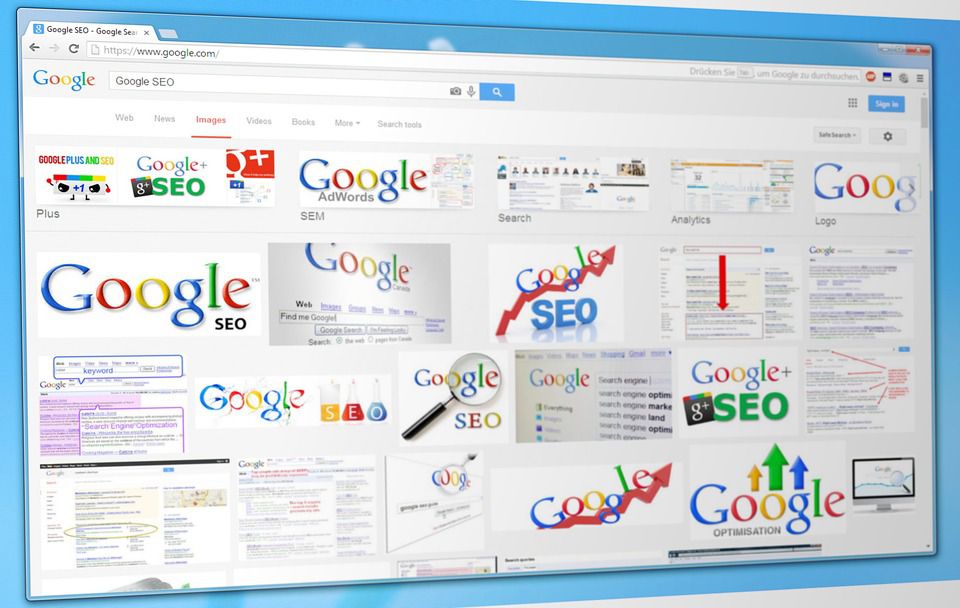What is the goal of any SEO campaign – to provide your company with better Google rankings. Mind you, this is only a very small piece of the cake but it aims at the foundation. After all, there are so many SEO solutions for movers to use to boost their online presence, it’s hard to keep track. So, this article serves as your quick improvement solution for those looking to only scratch the surface of online optimization. Hopefully, it will pique your interest enough to research more about it or seek further help from the experts at Movers Development.

9 SEO tips that are sure to improve your Google positions
So, you’ve gone and typed in some of the first moving-related keywords that come to mind for your location. And to your surprise, your website does not appear anywhere on the first couple of pages. This means that you have some serious search engine optimization to do but where do you start? How can you better your Google rankings? And are there any easy and quick solutions that you can apply to speed up the process?
Not to be the bearer of bad news, but quality SEO strategies are a long-term investment. So, you shouldn’t go about expecting overnight turnovers and miracles. However, there are some proven efficient SEO tips that you can use to your advantage to start the long journey towards improving your Google rankings. So, here are nine starter pack fixes for your website optimization.
#1: Make sure that your title tag is up to the task
If you like to read, you know that the title plays a critical role. And the same applies to web pages and online blog posts. When we discuss SEO influencers for better Google rankings, this is one of the more important ones. Plus, the title tag is the one that appears in search engine results – don’t forget that. So, here are some guidelines to follow to optimize your title tag:
- Your title tag should include long-tail keywords but still, be logical and natural for readers.
- Whenever possible, you should look to put keywords at the beginning of the title.
- Keep your title tag within 50-60 characters in length.
#2: Use headings for better Google rankings
Headings are important parts of articles – they help provide structure to the page or post. So, every blog or page should contain a minimum of two headings. And as long as the heading and the content under it include the keyword, Google will recognize it as an important part of the overall topic of the article. And this is a green flag for your search engine optimization.
#3: Optimize your URL
Google pays attention to URLs, too, so make sure your URLs contain keywords.
- Be sure to use fewer than 60 characters
- “Stop” words in a URL is generally something you want to avoid. Simply put, they are too low-value words to add any importance to the URL. In fact, they only clutter it unnecessarily.
- Follow a proper hierarchy in terms of pages, sub-pages and such.
#4: Use alt text for the images you incorporate into the text
Alt text is important for images in articles. To begin with, it makes your content more user-friendly, especially for those with visual impairments. On the other hand, it informs Google of what your image represents. You see, Google appreciates images but can’t really see them – the algorithms only read the text. So, it’s basically a screen reader. And adding keyword-rich alt text makes Google happy and increases your SEO. Some writing advice:
- Keep it short and precise.
- Make sure that it is descriptive (essential for Americans with Disabilities Act).
- Enrich it with keywords and variations but don’t over-spam the content.
#5: Make it easy to share

There is a lot of talk about the connection between better Google rankings and sharing via social media channels. However, talk doesn’t always make things true. At the moment, Google claims that its algorithms do not incorporate social media flags for the search rankings. So, for you to increase your social media presence won’t necessarily benefit your search engine positioning.
But it still won’t hurt – in fact, it can only benefit your SEO. The fact that Google might not look at social media content now does not mean that it won’t start at some point in the future. And when it does, it’s better to be set up and prepared, right? Plus, social media can significantly help spread your brand. The higher your brand awareness is, the more people will be inclined to reach out to your company, and this speaks to Google on some level. So, make sure that your content is easy to share.
- Add share buttons to your blog
- Ask your readers to share
- Post your content on multiple social media channels
- Include compelling images in your content (posts with images get more shares)
#6: Natural and readable content makes for better Google rankings
You should never underestimate the ability of search engines to recognize over-optimized spam content. As days go by, Google and other search engine algorithms constantly improve and look for new ways to identify and prevent forceful content. But this means that they can also tell the difference between spammy content and high-quality content which readers find useful. So when you write, do so from the perspective of those who will read that post and not those that will analyze it for SEO elements. At the end of the day, humans are your potential clients, not Google.
#7: Keep the blog alive and going
There is nothing better than an active website that continuously updates its content. So, you should always look to provide new and interesting articles for your website. When you research it a bit, you will find that most lead conversions are the cause of daily blog updates. And lead conversions are the byproduct of better Google rankings. We say that once or twice a week is more than enough to get the attention of search engines and online visitors. Any less than that and readers will lose interest in what you have to say.
#8: Meta your way into Google’s praises
The meta description is the descriptive text that appears under your heading in search results. And even though it might not carry much weight with Google, it does influence online readers. So, include keywords in your meta descriptions to help people see that they’ve found the content they’re looking for.
#9: Add external links to influential but non-competitive sites

Your content should include several links to other sites that have domain authority. These would be sites that Google ranks highly. By linking your content to such sites, you not only enrich it with valuable information for your readers, but you also demonstrate to search engines the depth of your content. Quality external links build credibility and value, and this is something you need to better your Google rankings.
So, what is the number of external links you should use? Nobody has the exact answer. Most people will tell you to include as much as possible. For me, you then risk losing the interest of the reader, because they won’t know what to read first. The best linking strategy to go with is to use more internal than external links. And if someone is that interested in learning about something unfamiliar to them, they will easily research it. But one thing is certain – the links you do use should be high-quality links.






